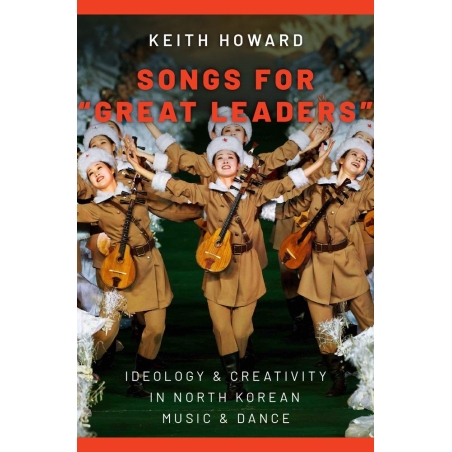The first book-length account of North Korean music and dance in any language other than Korean, Songs for Great Leaders pulls back the curtain for the first time on this famously reclusive and secretive regime.
CONTENTS
Introduction
1 Songs for the Great Leader
Songs, for the people and of the people
Songs, and song composers
Songs, assembled for the concert stage
Songs to build the state
Songs, built on the foundations of folksongs
2 Instruments of the People
Kaeryang akki: improving Korean instruments
Soviet and/or Chinese influence?
North Korean particularity
The chang saenap
Winds of change
The hand wind zither
3 Pulling at Harp Strings
Discarding the old?
Retaining the national zither, kayagum
Creating string instruments, from old to new
Discarding and creating lutes and dulcimers
Drums of persuasion
A new harp, or zither, or both?
4 Opera for the Revolution
Preface: juche ideology
Introducing revolutionary operas
Sea of Blood
A True Daughter of the Party
The Flower Girl
Oh! Tell the Forest and The Song of Mount Kumgang
5 Contextualizing Revolutionary Operas
Are revolutionary operas revolutionary?
Guided by the leaders
Before revolutionary opera
Beyond revolutionary opera
6 What Revolutionary Operas Do
Revolutionary operas as song operas
Song constructions
Portable songs
Operas as ideology, and opera as spectacle
7 From Spectacles to Dance
Watching the 50,000
Spectacles, calisthenics, gymnastics
Notating dances, prescribing spectacles
Chamo p'yogibop
A pan-Korean notation?
Ch'oe Sunghui and the development of dance in North Korea
North Korean dance, an overview
8 Composing the Nation
Learning to compose
Songs, as foundations
Upscaling songs ...
... Back to symphonies
Yun Isang, from South to North
9 Songs for New Leaders
Authorized pop
Pop as state telegraph
Footsteps of the general
Onward towards the final victory
Rolands and Yamahas
Epilogue
References
Index




